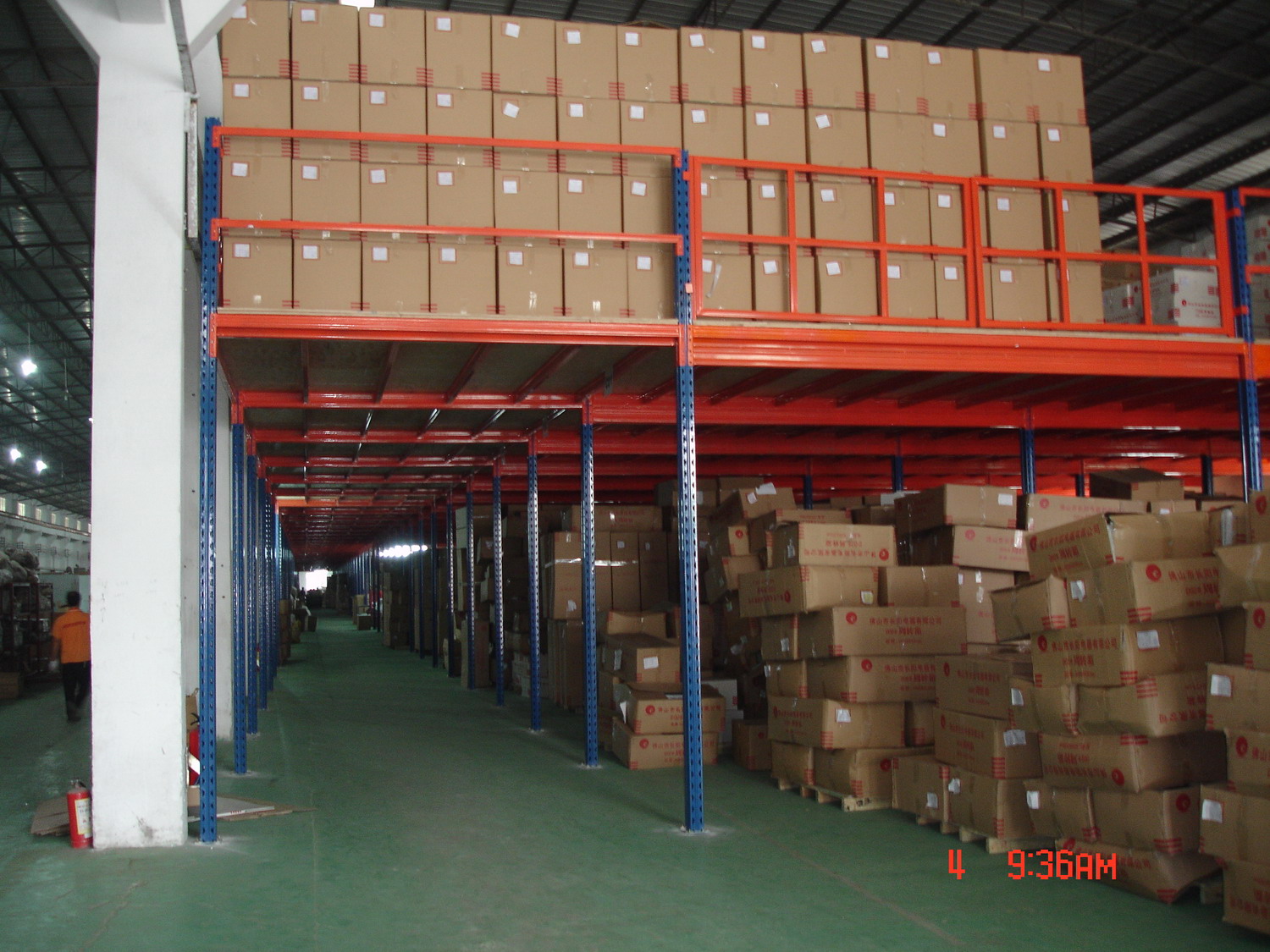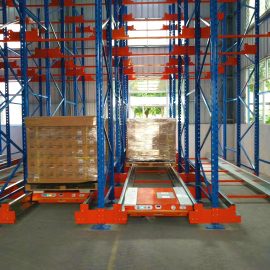Warehouse Mezzanine Floor Heavy Duty Mezzanine Platform Factory
The warehouse mezzanine Floor system typically consists of columns and support beams, also with steel plate or plywood board on the floor. Stairs, handrails, and elevators can be installed to facilitate access to the floor. The number of floors can be customized. If you’re interested in customizing your own mezzanine, please contact us.
| L*D*H (mm) | customizable |
|---|---|
| Color | Blue, Orange,Grey,White Customizable |
| Layer | 2Layer,3Layer Customizable |
| Load Capacity | 1000kg, 2000kg, 3000kg, Customizable |
| MOQ | 1 set |
| Weight | about 120-180 kg |
| Volume | 2 CBM |
| Estimated Delivery Time | 15-25 days |
Additional information
What Is Selective Mezzanine Floor?
Warehouse mezzanines floor are loft sections installed between the floor and ceiling, primarily used to increase warehouse storage space. Due to their high space utilization, mezzanines can be installed in workplaces, garages, and warehouse locations that are sufficiently large, typically allowing for 1-3 floors. Each mezzanine floor is an independent steel structure designed according to the warehouse layout. Most mezzanine systems can be designed around existing columns, machinery, windows, and sprinkler systems. Stairs, lifting platforms, or freight elevators could be Access to the floor. With their high space utilization, many companies use steel mezzanines for office space, tool beds, employee break rooms, or picking operations.
Free Design Drawings For You
Layout plan
Three-dimensional view
Renderings
Installation of Mezzanine Floor
Mezzanine floors are ideal for warehouses storing high-volume, lightweight goods, maximizing space utilization and saving storage area. They offer versatile space usage, with the upper levels serving as additional storage or office areas, making them popular in industries such as electronics, electrical appliances, light manufacturing, communications, and furniture production.
The Main Production Process Of Warehouse Mezzanine Floor

1
Punching Process
Holes are spaced along the entire length of the hanging plate at regular intervals, typically 50mm or 75mm apart, for attaching the cross beams.
2
Rolling Process
The uprights and beams are shaped from steel coil using rolling machinery, with beams often categorized as P beams and interlock beams, while uprights commonly feature diamond or teardrop holes.
3
Welding Process
By welding the hanging plate to the beam and the upright to the footplate, a secure connection is achieved, significantly enhancing the structural stability of the racking system.
4
Spraying And Baking Process
After welding, the product is polished, followed by the application of electrostatic powder coating technology on its surface, which is then cured in a high-temperature oven to guarantee a smooth finish.
5
Packaging Process
Reaching the final stage, once product manufacturing is concluded, we typically proceed with packaging the items intended for export. This step ensures protection against damage during long-haul transit and safeguards against corrosion from seawater exposure throughout the shipping process.
Our Products Are Packaged In The Following Ways

Air Bubble Film

Wooden Case

Pallet Packaging

Carton Box
What You Want To Know About Mezzanine Floor
Mezzanine racking generally does not exceed three levels and the height does not exceed 7.5 meters.
Conduct periodic inspections of the mezzanine floor to identify any signs of wear, damage, or structural issues. This includes checking for loose bolts, corrosion, damaged floor panels, and any deformation of the structure.
Take preventative measures to avoid damage to the mezzanine, such as installing column protectors, using floor mats in high-traffic areas, and avoiding dragging heavy items across the floor.
Yes, mezzanine floors can be used for both office space and storage, making them a versatile solution for maximizing the utility of vertical space within a facility.
It’s difficult to say how long the installation will take, as it depends on the size of the mezzanine, its complexity, and other factors. If you have a mezzanine plan, you can send it to us for evaluation.
First, you need to know the purpose of using the mezzanine, whether it is for office use or for storing goods, etc. Then, based on your needs, design the load-bearing range for each level.
It’s important to remember that accurate load capacity calculations are crucial for safety and compliance, and working with professionals is key to ensuring your mezzanine floor is both safe and functional.
Determine the primary function of the mezzanine floor, whether it’s for additional storage, office space, production area, or another purpose.
Calculate the load capacity needed based on the mezzanine’s intended use. This includes considering both the dead load (weight of the mezzanine structure itself) and the live load (weight of objects, people, equipment, etc.). Ensure the design accommodates the maximum expected load with an appropriate safety margin.
Plan for adequate lighting and ventilation on the mezzanine floor. Also, consider the need for utilities such as electrical outlets, data cabling, plumbing, and HVAC, depending on the mezzanine’s use.
Incorporate safety features in the design, including handrails, guardrails, and safety gates, to prevent falls and injuries. Safety netting or similar solutions may be needed for certain uses.
The cost depend on the mezzanine design. We could help you in design, and you could get instant cost.
Mezzanine floors involves various materials, chosen based on the specific requirements for strength, durability, cost-effectiveness, and the intended use of the mezzanine. Here are the most commonly used materials: Structural Steel,Cold-Formed Steel,Plywood plate, Steel Grating,Handrails and Guardrails and so on.









